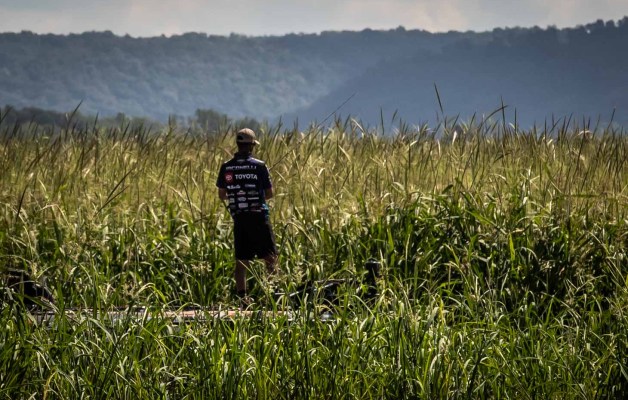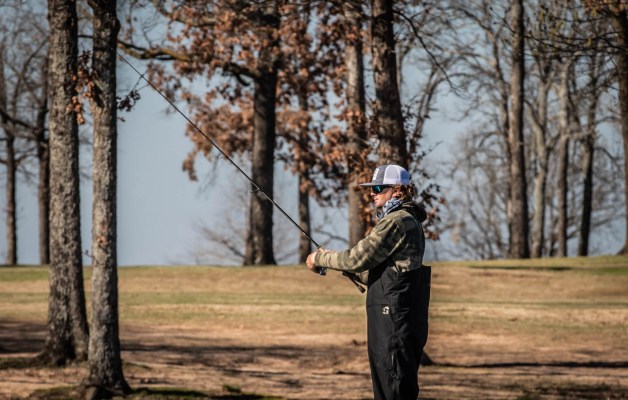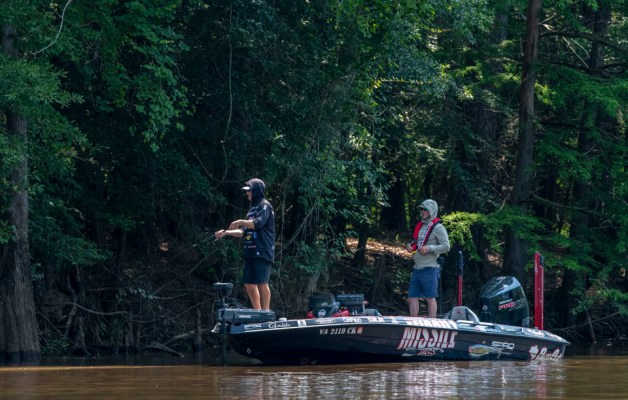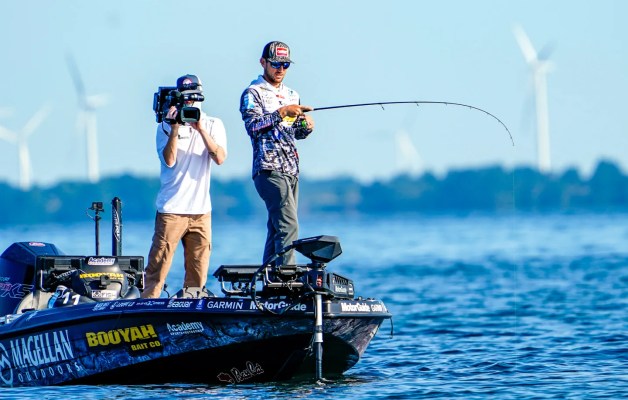I usually figure there are two ways to answer any question: a short way and a long way. I’ve always preferred the long way (though I’m not paid by the word), but in the interest of almost equal time, I’m going to offer the short answer here in addition to the long one.
First, the question: How do you win AOY?
I’m not just talking about Toyota Bassmaster Angler of the Year here, though I’ll be pulling stats and inferences from the Elite Series to make my points. The truth is, the same things that lead an Elite angler to an AOY title will work for you in your bass club or in any other tournament circuit.
Now, here’s the short answer to that question: Be — hands down and without a doubt — the best angler on the water day after day, week after week, tournament after tournament for a full season.
There! Now that we have that out of the way, let’s dig a little deeper, get a little more serious and come up with an instruction manual that can actually help you get it done. Be aware, though, that this longer answer assumes you’re already a very good fisherman — at least one of the top 25 percent in your circuit. If you’re not, come back to this when you’re ready.
By way of explanation, since the Toyota Bassmaster Angler of the Year race no longer involves a postseason (as it did in 2009 and 2010), I’m going to use data from those seasons as though AOY was determined through the regular season tournaments only. It means I’ll be writing about Skeet Reese as though he won AOY those years despite the fact that Kevin VanDam took the title both times with strong postseason performances. I’m doing this because I want to stay consistent with the system currently employed in the Elite Series and in most bass clubs.
Here then, are five not-so-simple things you must do to win AOY.
1. Start fast
You only have one chance to make a first impression, just one opportunity to get out of the gate cleanly. Realistically, you’re going to need every point you can accumulate if you want to win AOY, and it starts with the first tournament. There are no throwaways, no “drops” and no do-overs.

Year after year, Elite anglers tell me they’re not thinking about AOY early in the season. They’re either not telling me the truth or they’ve taken their eye off the prize. If you want to win something — anything — it’s important to keep it in the crosshairs all the time. That includes the first tournament.
In Elite history, the worst season-opening performance by an eventual AOY was 31st out of 109 anglers by KVD in 2008. Not only is that not bad and well inside the first cut, but it’s actually very, very good — and that’s the worst! Four of the seven AOYs in the Elite era ranked in the top nine in the season’s first tournament. Five of the seven were in the top 16 and all but VanDam were in the top 22.
If you want to win AOY, start strong. And if you don’t start strong, start thinking about next year. It’s that critical.
2. Avoid disaster
OK, truth be told, this is probably the most important thing on this list and the one that costs would-be AOYs the title most often. They can’t — or don’t — mitigate their damages.
No tournament angler wins all the time. We know that. It’s also true that no one makes a check in every event — though VanDam comes remarkably close. What truly separates the champs from the wannabes is damage control. When the best have a bad event, they finish 60th. When the rest bomb, they really struggle and finish near the bottom. The difference is everything.
To win AOY at the Elite level you don’t need to finish in the top 20 every time out. In fact, no one’s ever done that for a full season. Instead, you need to string together four or five very competent finishes, sprinkle in a couple of great events (including maybe a win that we’ll cover in a moment) and post only one performance that’s below average.
Of the seven eventual AOYs, the worst performance ever turned in during the season was 68th place at Douglas Lake by Brent Chapman in 2012. Iaconelli in 2006 and Reese in 2007 each had a tournament nearly as bad. Only Reese in 2009 and KVD in 2011 went the full AOY season without a finish worse than 56th, which is just outside the first cut.

When you mitigate disaster by making your worst finish something that’s not in the bottom third of the field, you keep the door closed for challengers who hope to jump in when you stumble. Statistically, this is the biggest difference between VanDam and the legion of anglers who post a season or two near the top of the AOY race. His “bad” tournaments really aren’t so bad. Their “bad” tournaments leave them muttering to themselves.
The real reason KVD has won so many AOY titles and challenges virtually every year is that his worst finish in any Elite event was 59th at Clear Lake in 2010. (He’s also the best of all-time, and that doesn’t hurt.) VanDam barely missed the cut in his worst tournament! Everyone else who has fished at least one full season in the Elites has a finish of 79th place or lower.
Some baseball minds I respect say the reason Ty Cobb won so many batting titles is because he never took an at-bat “off.” Even if his team was winning or losing by a dozen runs in the final inning, he went to the plate determined to get on base. He never stepped up there, took three quick swings and went back to the dugout, content that the at-bat didn’t matter. They all matter. That’s how he hit .366 for his career.
VanDam is like that. If he has a rare bad first day, rather than call the tournament a lost cause, he regroups, reassesses and redoubles his efforts for Day 2. Instead of letting a poor start spiral him into 85th place, he turns things around and moves up, often inside the cut and always into the range of a respectable finish. In terms of attitude, I’m convinced that’s what sets him apart from the rest of the field.
3. Win when you can
Five of the seven AOYs in the Elite era won at least one tournament in the season they captured the crown. VanDam won twice in 2008 and Reese did the same in 2010. Only Reese in 2009 and VanDam in 2011 finished the season without a trophy, and both of them had a second place finish that year.
Under the current Elite scoring system, the difference between first and second is only a single point, so winning isn’t as valuable as it was before 2012. Nevertheless, in your club or circuit scoring system, the difference between a win and a runner-up finish might be considerable — perhaps even more than the margin between AOY and the second place finisher.

Take home the trophy when you’re in contention … but remember that when you’re not in contention, you need to mitigate damages and collect as many points as you can.
Vince Lombardi was not a bass angler. When he said “Winning isn’t everything … it’s the only thing,” he wasn’t talking about tournament fishing. A tournament angler in search of AOY should change it to “Winning isn’t everything, but I’ll take it when I can.”
4. Have good timing
Realistically, even an AOY is going to have a letdown somewhere along the way. A key seems to be when he has it. Have it too early and it gets the entire season off on the wrong foot. Bomb in the first tournament and you may find yourself pressing in the next. Pretty soon, one bad tournament snowballs into three … or four … or a full season.
Have the bad tournament late and you get run down like a fatigued marathoner within sight of the finish line. There are almost always a few competitors within striking distance if the leader has a bad day at the last event. The more there are, the more likely one can step up and take it away.
In Elite history, the eventual AOYs were uncanny in this timing element. None of them had their worst tournament in the first event … or the second … or even the third. They started strong.
Likewise, none of them had their worst showing in the last tournament. And only one had his worst finish in the penultimate event. That was Skeet Reese in 2009 when his worst was 29th at the Mississippi River. It was the best “worst” in AOY race history.
If your worst is going to be that good, you can have it anytime you want. Otherwise, sandwich it somewhere in the middle.
5. Finish strong
Just as the eventual AOYs started the season on the right foot, all of them were pretty strong in the finale, too. In fact, none of them missed the first cut in the final tournament of the season. The worst finish was 41st out of 101 anglers by Michael Iaconelli in 2006. KVD was 38th out of 106 in 2008 — again, not bad at all. Three of the seven AOYs were in the top six and five were in the top 14.

If it means putting extra effort or practice into the last event, do it. If it means enlisting extra (and legal) outside help, get it. There’s nothing quite as frustrating as falling short at the finish line. If you leave something undone and wind up second, you’ll be kicking yourself all off-season.
Just because you’ve done everything right going into the last event doesn’t mean you can let your foot off the gas. Keep the pressure on to the final cast and leave it all out there on the water. Most AOY races aren’t over until the final weigh in of the last tournament.





